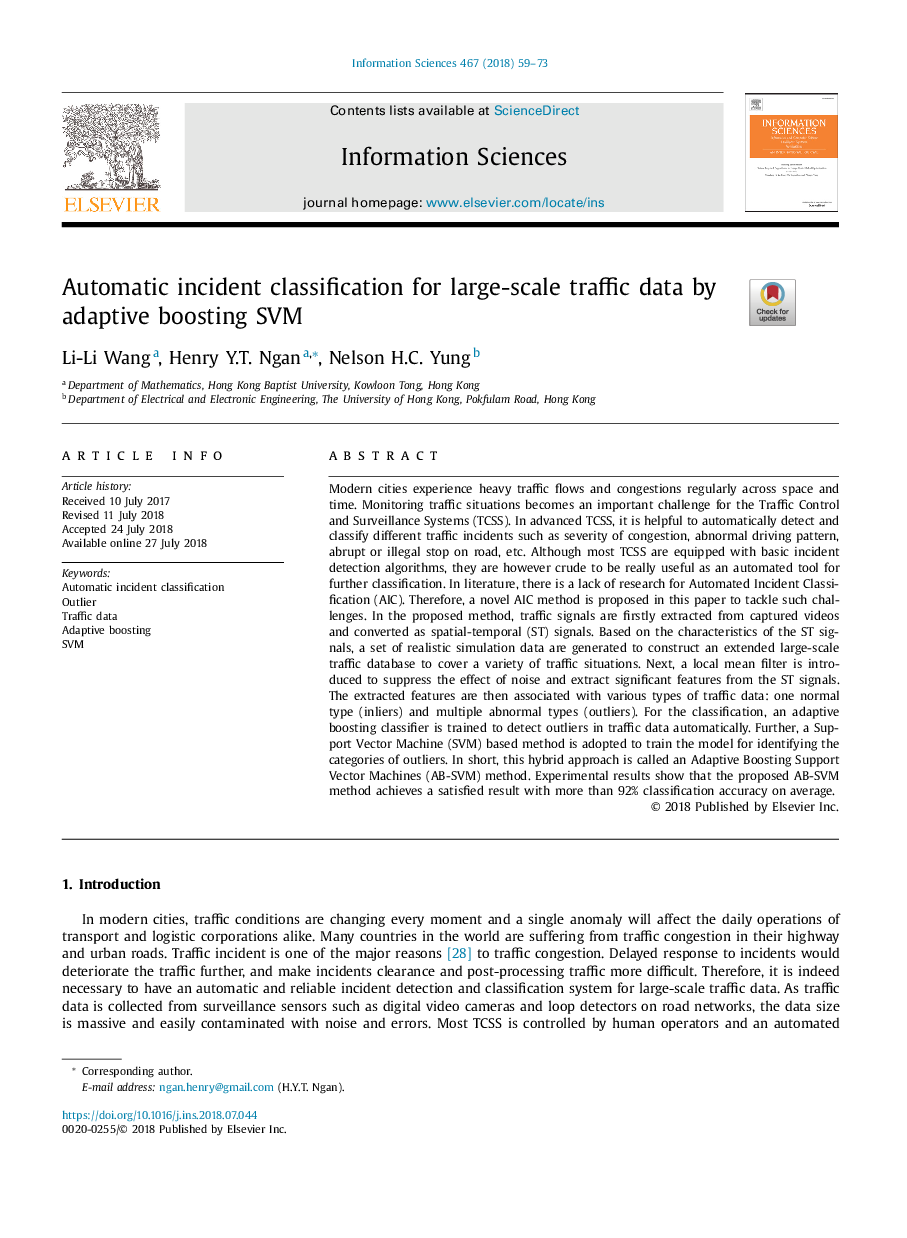| Article ID | Journal | Published Year | Pages | File Type |
|---|---|---|---|---|
| 6856127 | Information Sciences | 2018 | 15 Pages |
Abstract
Modern cities experience heavy traffic flows and congestions regularly across space and time. Monitoring traffic situations becomes an important challenge for the Traffic Control and Surveillance Systems (TCSS). In advanced TCSS, it is helpful to automatically detect and classify different traffic incidents such as severity of congestion, abnormal driving pattern, abrupt or illegal stop on road, etc. Although most TCSS are equipped with basic incident detection algorithms, they are however crude to be really useful as an automated tool for further classification. In literature, there is a lack of research for Automated Incident Classification (AIC). Therefore, a novel AIC method is proposed in this paper to tackle such challenges. In the proposed method, traffic signals are firstly extracted from captured videos and converted as spatial-temporal (ST) signals. Based on the characteristics of the ST signals, a set of realistic simulation data are generated to construct an extended large-scale traffic database to cover a variety of traffic situations. Next, a local mean filter is introduced to suppress the effect of noise and extract significant features from the ST signals. The extracted features are then associated with various types of traffic data: one normal type (inliers) and multiple abnormal types (outliers). For the classification, an adaptive boosting classifier is trained to detect outliers in traffic data automatically. Further, a Support Vector Machine (SVM) based method is adopted to train the model for identifying the categories of outliers. In short, this hybrid approach is called an Adaptive Boosting Support Vector Machines (AB-SVM) method. Experimental results show that the proposed AB-SVM method achieves a satisfied result with more than 92% classification accuracy on average.
Related Topics
Physical Sciences and Engineering
Computer Science
Artificial Intelligence
Authors
Li-Li Wang, Henry Y.T. Ngan, Nelson H.C. Yung,
